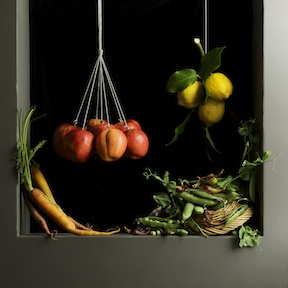aNewDomain — Sand painting is the art of using colored sand to create complex art – usually mandalas.
— Sand painting is the art of using colored sand to create complex art – usually mandalas.
The practitioner of this discipline might spend days or even weeks layering colored sand in a box to create stunning visuals, only to destroy it when it is done.
That destruction comes about explicitly — and it’s intrinsic to this art. Awareness of impermanence, awareness that all one’s efforts on Earth result only in temporary things, this is the point. Knowing the art must be destroyed, this does not mean there is no point in its creation. Rather, the thing of beauty is made in full knowledge of the futility of beauty.
There’s something beautiful in that.
Check out this video:
This is not only an obscure mystical tradition, however.
We’re very busy here, in our Western world, and we don’t often stop to think about these things. If you took some art classes in college, though, you might know that still life paintings can be a meditation on this same topic.

In still life, a purpose for the artist is to contemplate the temporary nature of the scene. You paint an apple in a shaft of sunlight, with a vase of flowers behind it. That arrangement will never exist again once you are done painting it. Everything will be moved, even that shaft of light, never to reoccur in just the same way.
Moreover, the flowers must wilt and the apple must be eaten or rot and the vase, in the end, must shatter. The table will be destroyed and you will too. Even the models in figure paintings must age, sag, die and rot.
Again, the art is not lazy, dashed off because of the impermanence of its subjects, or because the painting itself will eventually burn. It is all the more beautiful because it is poignant. A moment of joy is necessarily also a moment of sadness. It will never again be with us in just this way. We will never be here again.
Other kinds of art are themselves more like sand paintings. Sandcastles and ice sculptures, for example. Such things are created for a moment, for one perfect second in time, and then the sea washes over them or the day melts them away.
 Nothing left except, perhaps, a memory. And then there is street art, paintings done on pavement to await footsteps, traffic and rain.
Nothing left except, perhaps, a memory. And then there is street art, paintings done on pavement to await footsteps, traffic and rain.
One of my new favorite places, Little London Cake Shoppe, made a cake for my book release party. I didn’t take any really great pictures of it and now, writing this article, I’m annoyed but also glad. This think must be allowed to pass out, to pass away. They did so fine a job of replicating the art on my book cover that everyone was amazed. You must not, they said, want to eat it.
But I did eat it. It was every bit as good on the inside. And that is what it was made for. The cake artists, they make cakes, things to be eaten. Consumed and destroyed, never to be seen again. When I picked up my cake, the clerk went through her stack of orders for that day and it was a deep stack. Hundreds of hours of labor into these works of art that please people for a moment and then are carved apart with knives, slapped onto plates, chewed with maybe no more thought.
Amazing. Wonderful and amazing.
Paintings in sand,
Created for the moment,
Hours by hand,
Seconds to lament.
The lives of men,
Quick for a moment.
Alive but then
So quickly spent.
For aNewDomain, I’m Jason Dias.
Cover image: YouTube, All Rights Reserved. image one: Cake2 (By Sicilian (Own work) [CC BY-SA 3.0 (http://creativecommons.org/licenses/by-sa/3.0)], via Wikimedia Commons) Image two: “Self-portrait in a Straw Hat by Elisabeth-Louise Vigée-Lebrun” by Louise Élisabeth Vigée Le Brun – http://www.nationalgallery.org.uk/paintings/elisabeth-louise-vigee-le-brun-self-portrait-in-a-straw-hat. Licensed under Public Domain via Wikimedia Commons – https://commons.wikimedia.org/wiki/File:Self-portrait_in_a_Straw_Hat_by_Elisabeth-Louise_Vig%C3%A9e-Lebrun.jpg#/media/File:Self-portrait_in_a_Straw_Hat_by_Elisabeth-Louise_Vig%C3%A9e-Lebrun.jpg):













